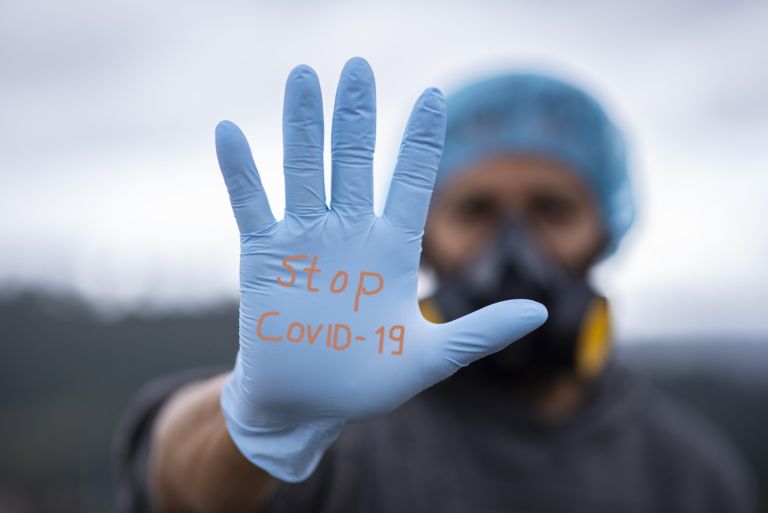Image source: Screen shot of students forced to wear masks in school, as seen in the #MaskLikeAKid music video, “The Mask Will Come Off … Tomorrow?” Most of North Carolina’s school boards still continue to inflict abuse and harm on our little onesby forcing them in face masks, a horrific malpractice that now even liberal establishment outlets are openly challenging. It’s a failed policy that also flies in the face of science. A brave and compassionate few are resisting adults’ panic and not forcing little ones into masks. As of this writing, they include school boards in Ashe County, Avery County, Beaufort County, Carteret County, Catawba County, Newton-Conover City, Cherokee County, Cleveland County, Gaston County, Harnett County, Lincoln County, Macon County, Onslow County, Pamlico County, Pender County, Randolph County, Rockingham County, Rowan-Salisbury, Stanly County, Union County, and Yancey County. School boards in Camden County, Stokes County, Surry County, Wayne County, and Yadkin County made masks optional on a school-by-school basis.
This past week 97.7% of people in NC were estimated to pose no threat of passing along COVID-19 to anyone. Nevertheless, 39 out of 40 (97.4%) adult North Carolinians — and more than 19 out of 20 (95.5%) North Carolinians of any age — are estimated to have either been at least partially vaccinated or acquired natural immunity against Covid-19 or both. (See the end of this update for more discussion of those percentages.)
Here is the NC Threat-Free Index for the week ending January 31. All of the statistics generated for the NC Threat-Free Index are based on numbers provided by government sources. This link gives a detailed explanation of how each statistic is derived.
- As of January 31, there were over two million (2,149,838) North Carolinians presumed to be recovered from Covid-19.
- Active cases comprised 10.4% of NC’s total case count. A case of Covid-19 isn’t a permanent infection. Only someone with an active case of the virus can conceivably transmit it to you. The total case count given banner headlines comprises active cases, the very large proportion of people who have recovered, and the very small proportion of people who have died with Covid-19.
- Active cases represented 2.3% of NC’s population. Active cases are lab-confirmed cases of Covid-19 minus recoveries and deaths.
- Also, eight out of every nine (88.8%) of NC’s total cases were recovered. People who have recovered from Covid-19 are no longer infectious. More importantly, a large and growing body of empirical research (“science and data”) shows that they have acquired persistent, long-lasting, and robust natural immunity to Covid-19 — immunity that is stronger against Covid-19 and its variants than even that enjoyed by those who are fully vaccinated.
- Only 0.19% of people in NC had died with Covid-19. This statistic must be phrased in that manner (“with,” not “from”) because of the lack of clarity over the actual cause of death and because of the research finding as well as DHHS and the CDC admitting that a significant proportion of COVID-19 hospitalizations and deaths were “not related to Covid-19.” A recent investigative report found that 1 in 3 Covid patients at UNC Health and a whopping 60% of Covid patients at WakeMed had gone to the hospital for non-Covid reasons.
- All things considered, 97.7% of people in NC posed no threat of passing along Covid-19 to anyone. This estimate will fluctuate based on relative growth in lab-confirmed cases vs. recoveries.
Herd immunity, post-vaccination infections, and reinfections
For the week ending January 31:
- Now 39 out of every 40 (97.4%) adult North Carolinians are estimated to have some protection against Covid-19, whether it’s through vaccination (this group alone is at 75%) or the stronger and more durable natural immunity from prior infection (there are as of this date 146 research studies attesting to the strength of natural immunity) or both. Adults are the ones most at risk of losing their jobs, access to government services, ability to travel, ability to buy groceries, etc., for not being vaccinated even though the ostensible public interest is in immunity.
- Conversely, as of January 31, only about one in 40 (2.6%) adult North Carolinians were estimated to have neither vaccine-induced nor natural immunity.
- Looking at the total population, more than 19 out of every 20 (95.5%) North Carolinians are estimated to have some immunity. These estimates are based on DHHS case numbers, CDC estimates of actual infections, DHHS estimates of current vaccinations, and the formula outlined here.
- The most recent update from DHHS found 350,242 post-vaccination infections among 5,934,726 fully vaccinated individuals, and the estimated post-vaccination infection rate for the week ending January 17 was 5.9%. Given how strictly DHHS defines a “post-vaccination infection” — as of now, someone must be at least two weeks past receiving the second of two injections; anyone with only one injection or within two weeks of receiving the second “counts” as an unvaccinated case of Covid — the actual post-vaccination infection rate could be much higher than the estimated rate.
- Also as of the week ending January 17, 37% of Covid-19 cases in North Carolina over the previous week were to people considered fully vaccinated. That is a very high proportion for something described by Pres. Joe Biden on January 4 as a “pandemic of the unvaccinated.”
- As of the week ending January 17, there had been 56,018 reinfections for those with prior lab-confirmed cases of Covid-19, and the estimated reinfection rate was 3.2%. For reasons discussed here, the actual reinfection rate is likely much lower than the estimated rate.
How Come the Immunity Estimates Are So High When Case Numbers Are So High?
It’s been concerning, to say the least, to see case numbers rising so quickly among those considered fully vaccinated. In the month of December, fully 35% of Covid cases were in that group. Just over 5% came to those who had suffered a prior Covid infection and were not considered fully vaccinated. As this tendency became undeniable and in keeping with the CDC’s change of definition (see before and after), this index had to drop its previous description of “vaccine-induced immunity” in favor of “protection … through vaccination.”
This index has always used the “partially vaccinated” proportion in making its estimate, and that is because last April, Gov. Roy Cooper originally predicated relaxing most of his extreme emergency orders on having two-thirds of adults partially vaccinated. As of this writing, the proportions of partially vaccinated (75%) and fully vaccinated (71%) adults are very close.
It might be better at this point to focus on those who are fully vaccinated (71% of adults, 62% of the general population). As you can probably see, the estimates won’t change very much. They would be 97.0% of adults and 94.8% of North Carolinians (as opposed to 97.4% and 95.5%).
OK, what if we focused on the population who are fully vaccinated plus having received a booster (50% of adults, 47% of the general population)? It still doesn’t change the estimates very much: 94.8% of adults and 93.2% of North Carolinians.
Why? Because of the rise in North Carolinians with infections and therefore prior infections. Not just the official case numbers, the estimated number of actual infections. That’s a key distinction. The CDC in its most recent Estimated Covid-19 Burden report (updated Nov. 16) estimates that only 1 in 4 of Covid-19 infections are actually reported. The CDC’s estimate makes sense “if you consider, for example, one member of a family of four tests positive but the rest in the house feel sick, or also so many mild or asymptomatic infections that wouldn’t prompt a doctor’s visit.” Of course, someone’s natural immunity does not hinge on whether an infection was officially reported.
How the index handles estimating natural immunity under such uncertainty is this way (caution: description of math ahead): starting with the raw number of cases, it subtracts reinfections (to avoid double-counting), multiplies the remainder by four (the CDC multiplier), subtracts out deaths, and then discounts the remainder by the relevant vaccinated proportion (again to avoid double-counting). It then determines what proportion of the state’s population that figure is and adds it to the proportion of those vaccinated.
A final note about discussing natural immunity
Some people, and not only witless ankle biters but even those who really should know better, seem to think that any mention of natural immunity somehow detracts from vaccination. Don’t be one of them. People have been contracting Covid-19 since before it was even officially recognized, and they include, among many, many others, health care workers and other “essential” workers who served the effete laptop class in the early months of Covid lockdowns. It is an especially grave injustice against them to support vaccine passports and similar policies that make no accounting for their natural immunity, and it’s based in the abject stupidity of believing that spread of a new virus depends upon whether enough people obey government orders fervently enough.
Hoping to ward off such silliness amid a Sept. 9, 2021, column on natural immunity, I specifically wrote the following:
It shouldn’t need to be said, except in this bizarre time in which things that “shouldn’t need to be said” are the very things that require clear statement, but such research and discussion is in no way meant to counsel against vaccination, which ought to be a personal decision based on a dispassionate weighing of personal benefits and costs without coercion. Nor is it to argue for deliberately contracting an infection.
I have personally witnessed this presentation of facts carom around inside someone’s skull until it comes out bruised and twisted into “Oh sure, go get Covid and die, then you’ll be immune!”
Even with that disclaimer, someone still responded, “So your answer is to get everyone sick the hell with the deaths, long term complications and the strain on our medical system.” Oblivious.


